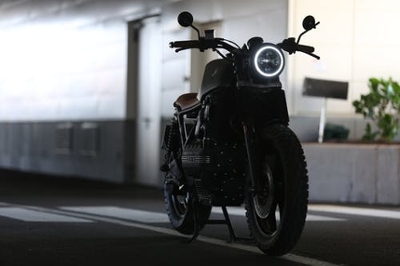Motorcycles are incredibly popular in the U.S. Out of every 36 people you meet, one has a bike of their own. Given the landscape of America, it’s easy to understand why. With over 3.7 million square miles to explore in this expansive country—from the coasts of California to the Everglades in Florida—the lure of hopping on a powerful bike and feeling the wind in your hair is hard to resist.
Unfortunately, owning (and using!) a motorcycle is more fun than taking care of one. In addition to routine maintenance care, you are expected to understand the ins and outs of its basic components—most important of all being the battery. Before we begin discussing cost, let’s take a look at the three types of motorcycle batteries available and how they differ.
- Wet Lead Acid Battery: Wet lead acid batteries (also known as flooded lead acid, or FLA, batteries) are the oldest type used in motorcycles. They are made of plates, lead, and lead oxide, and contain a solution comprised of 35% sulfuric acid and 65% water. They require the most care and need to be regularly topped up with distilled water to prevent the battery plates from becoming damaged.
- Gel Cell Battery: Gel cell batteries are lead acid batteries that are sealed. They contain a gelified electrolyte-sulfuric acid solution that is fumed with silica; this makes the mass immoble (and gel-like, as the name suggests). They’re superior to wet lead acid batteries in that they don’t experience electrolyte evaporation, spillage, or corrosion, and are much more resistant to vibration, shock, and extreme temperatures.
- Absorbed Glass Mat (AGM) Battery: AGM batteries are the most common type of lead acid batteries used in motorcycles. They are sealed and almost entirely maintenance-free; they don’t need to be topped up with water or held in an upright position, and are very resistant to heat and vibration. Though they boast the same benefits of gel cell batteries, they are much more affordable.
Calculating the Cost
\When it comes to the cost of motorcycle batteries for sale, knowledge is power. Most manufacturers will charge around $100 to $150 for a new battery, but the cost of maintenance plays a significant role. Motorcycle batteries are expected to last between three and five years, but failure to commit to their maintenance demands can cut that lifespan down to just one or two years. Investing in a battery that requires little to no routine care—like the AGM battery—can save you a legitimate amount of money in the long run.
That being said, there are some basic care tips that will keep your battery in tip-top share, ensuring that you get your money’s worth out of the purchase. If you live in an area that experiences harsh winters with regular temperatures that dip below freezing, you’re going to want to dedicate some extra time to its care; such cold can cause your battery to crack. Additionally, you should invest in an automatic battery charger or maintainer. These units provide your bike’s battery with a charge current, guaranteeing that it will be fully charged and free of sulphation—a buildup of lead sulfate crystals on the battery plates, and the number one cause of early battery failure—when spring finally comes around.
Having a motorcycle can be great fun, but only if you do your due diligence as an owner. Put the time and effort into its care, and you’ll definitely get the most for your money; neglect it, and you’ll see first-hand just how much maintenance matters.
Content Provided By Scholarship Media


